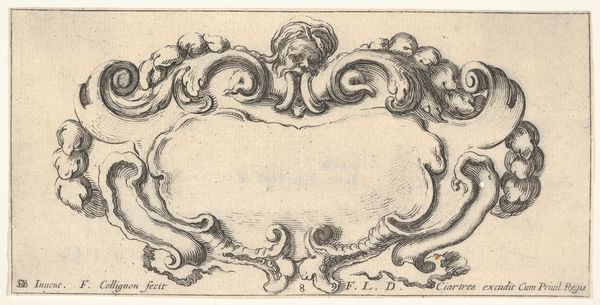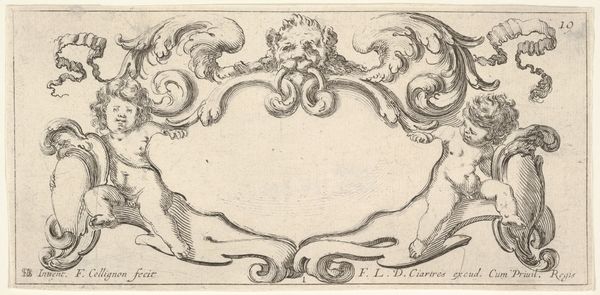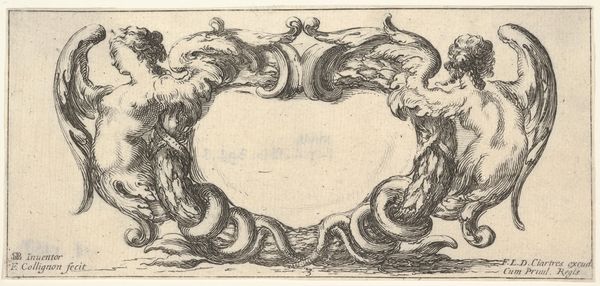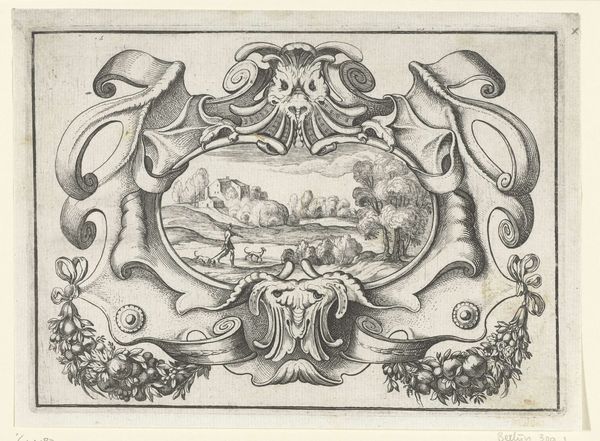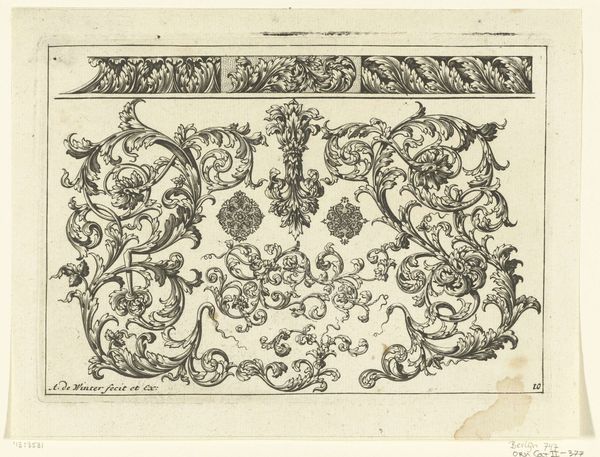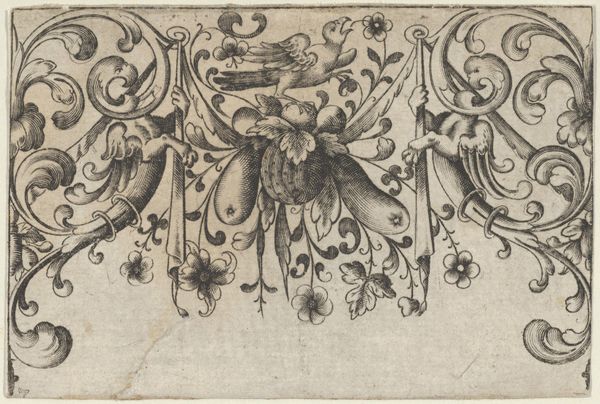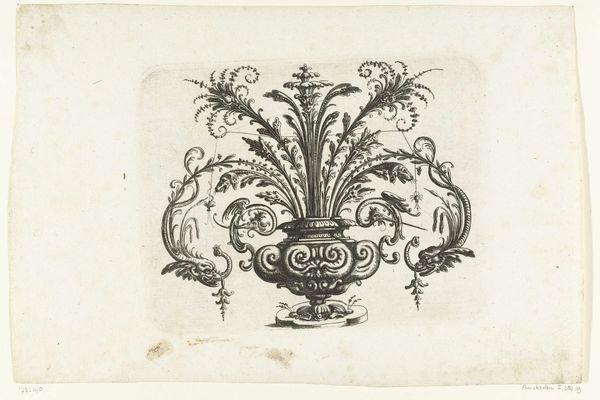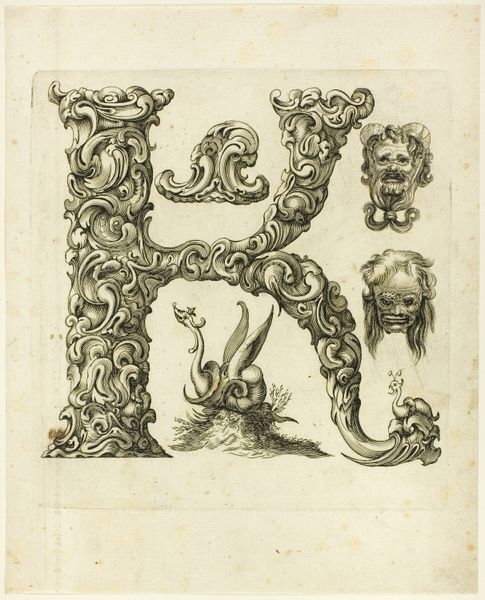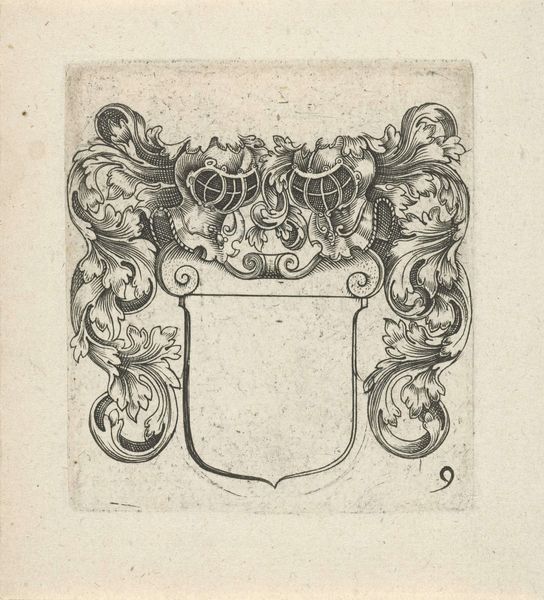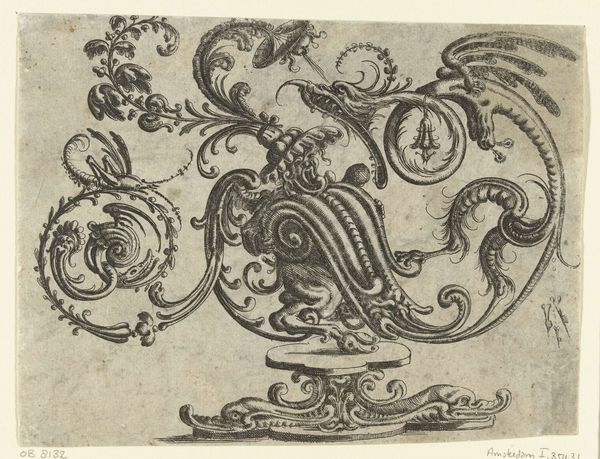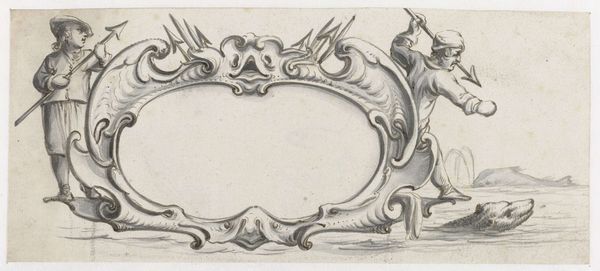
Plate 5: a cartouche with a blank escutcheon at top center, a chimera to either side, their bodies ending in scrollwork and dragon tails, from 'Twelve cartouches' (Recueil de douze cartouches) 1640 - 1645
0:00
0:00
drawing, graphic-art, print, ink, engraving
#
drawing
#
graphic-art
#
ink drawing
#
baroque
#
pen drawing
# print
#
ink
#
engraving
Dimensions: Sheet (Trimmed): 3 5/16 × 2 7/8 in. (8.4 × 7.3 cm)
Copyright: Public Domain
Editor: This is "Plate 5" from 'Twelve cartouches' made with ink engraving between 1640 and 1645 by François Collignon. It's interesting how the artist created such an ornate frame design using such precise lines with engraving. What stands out to you about the work's creation? Curator: The piece highlights the commodification of artistic skill during the Baroque era. Consider the labour involved in creating these intricate engravings. It's not just art, it's artisanal craft produced within a specific economic system. Do you notice how the design lends itself to reproduction and dissemination? Editor: Absolutely, I see that. The symmetry would make it easier to reproduce as prints, allowing the design to reach a wider audience. Was there a particular demand for this kind of ornamental design at the time? Curator: Precisely. There was a growing market for decorative prints among the burgeoning middle class. The material production facilitated social climbing, bringing aesthetics into everyday life beyond the elite. How does understanding this influence how we appreciate the "artwork"? Editor: It definitely changes my perspective. Thinking about the production process and the print's accessibility makes it seem less like a precious object and more like a functional item for design inspiration, available to many. It connects artistic skill directly to economics and social mobility. Curator: Exactly! It breaks down traditional high-art boundaries. We move away from mere aesthetic appreciation to analyzing the economic and social factors that shaped its creation and purpose. Now, does that change how you feel about the chimeras? Editor: It does. They seem less symbolic and more like decorative motifs, commodities traded between the artist, the printmaker, and the consumer. Thinking about all the different skills, materials, and labor really made me rethink this piece. Curator: Indeed. Considering art as the product of material conditions offers fresh insights beyond simply admiring the aesthetics.
Comments
No comments
Be the first to comment and join the conversation on the ultimate creative platform.
